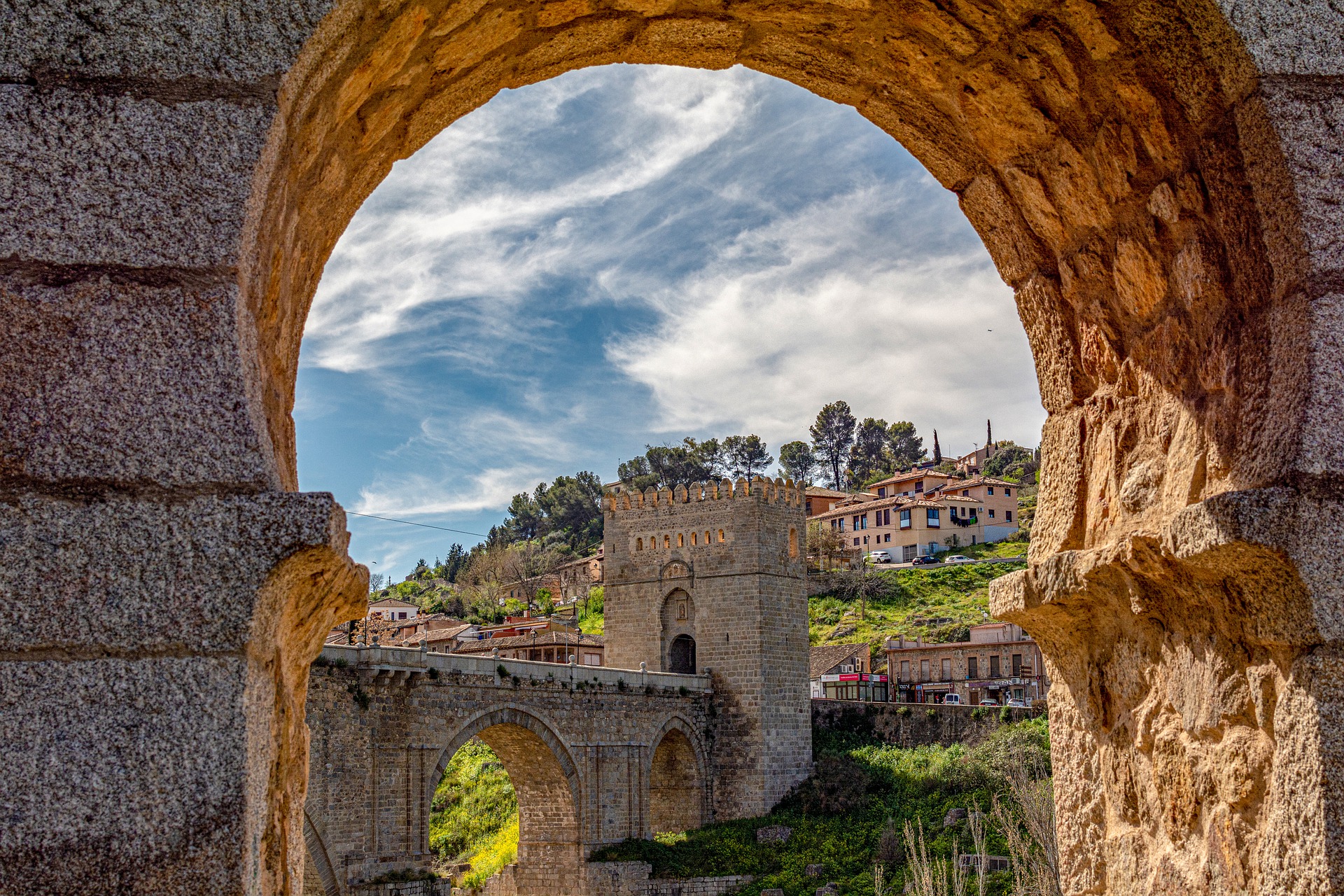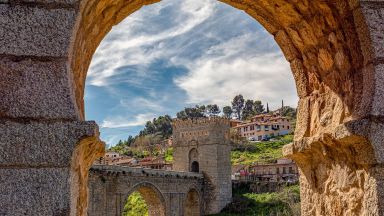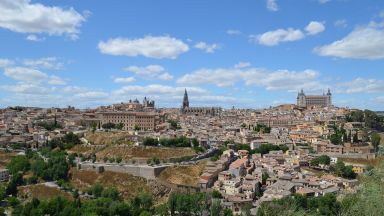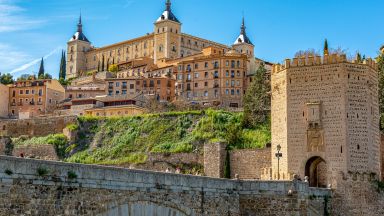Complete Toledo Travel Guide
This website uses affiliate links which earn a small commission at no additional cost to you.
Spain is abundant with remarkable cities to explore, and while Madrid, Barcelona, and Valencia garner much attention, I have a special fondness for the culturally rich smaller Spanish cities. Among these, the captivating city of Toledo holds a top spot in my heart. Being one of the oldest and most unique cities in Spain, it was once the country’s capital and remains esteemed as its cultural centre. Toledo is a treasure trove of historical landmarks and hosts captivating centuries-old festivals. For travellers seeking an authentic Spanish cultural experience, few cities compare to the incredible Toledo. To help others fully enjoy their visit, I’ve crafted this Toledo Spain travel guide.
Getting to Toledo from Madrid
By Bus: The bus is the cheapest method of getting to Toledo with tickets starting at 6 euros costs just about 5 euros each way and takes an hour and a half to get between Madrid and Toledo. Buses leave every half an hour and depart from Plaza Eliptica to the south of Madrid.
By Train: The high-speed train from Toledo to Madrid takes about 30 minutes and costs about 14 euros, so if you are staying near Atocha train station, this is the best way to get to the tourist city.
By Tour: The easiest way to visit Toledo from Madrid is by guided tour. There are a number of tour companies that operate trips to Toledo from Madrid. We went on the From Madrid: Toledo Full Day Trip which also included a short walking tour.
Best Time To Visit Toledo
June is our top recommendation for visiting Toledo, especially during the Corpus Cristi Fiesta when the city is adorned with stunning flower decorations in the streets. However, be prepared for larger crowds during this festive time. Other excellent months to explore Toledo are March, April, May, September, and October.
Keep in mind that many restaurants in Toledo are closed on Sunday nights and Mondays, so plan your dining accordingly.
History of Toldeo
Toledo’s history dates back to around the 5th century BC when it was settled by Jewish travelers, known to the Romans as Toletum. It fell under Roman rule in 193 BC, becoming the capital of the province of Carpentia. During the Visigoth era, it served as an essential civic center under leader Leovigild, and later, the Moors conquered the city in 711.
Toledo, however, resisted the Moorish conquest and witnessed several rebellions against their rule. Eventually, Christian leaders recaptured the city, with Alfonso VI of Castile taking control in 1085. Under Christian rule, Toledo flourished as a center for Christian learning, while its Arab library remained intact. Sadly, the city’s Jewish residents faced persecution, with mass burnings carried out by the Archdiocese of Toledo in various years.
As the Spanish court moved to Madrid in 1560, Toledo experienced a period of decline, becoming a political and economic backwater. Despite its medieval ambiance, the 20th century brought challenges, including the Spanish Civil War in 1936 when the citizens sought refuge within the sturdy walls of the Alcazar castle.
After the war, Toledo experienced a resurgence with its historic center being declared a UNESCO World Heritage Site, attracting tourists and gaining recognition as the capital of Castile-La Mancha. In recent years, the city has enjoyed a revival, embracing its rich history and cultural heritage.
What to See in Toledo
Toledo’s rich history is a testament to the coexistence of Christians, Jews, and Arabs within its ancient walls, leaving behind an extraordinary cultural, historical, and artistic legacy that endures to this day.

The city boasts over 100 remarkable monuments, including beautiful churches, palaces, synagogues, and mosques, each offering a glimpse into its diverse past. Enter the old city through the striking Puerta de Bisagra, a double gateway with one part dating back to the 6th century when it was constructed by the Moors, and the other added in the 16th century.

Among the countless monuments, the El Alcazar fortress stands out as an emblematic symbol. Positioned atop the highest hill, it overlooks the rest of the city, commanding attention with its imposing rectangular structure. The visiting hours for the Alcazar de Toledo vary depending on the season, but it is generally open to the public every day except Mondays.
Catedral de Toledo stands as another iconic gem in the city, occupying the centre and serving as a prime example of Gothic-style architecture in Spain. Its construction commenced in 1226, but the cathedral was not fully completed until the 15th century. Reflecting Toledo’s multicultural heritage, the cathedral also showcases elements of the Mudejar style, blending Islamic and Christian influences seen throughout the city.
Audio guides and guided tours are also available for an additional fee, night visits are also available for groups.
In the heart of Toledo’s old Jewish quarter (Calle Samuel Leví, 3 ) is the House of El Greco which displays an interesting assortment of works by El Greco notably ‘View and Map of Toledo’ (Vista y Plano de Toledo). Although the artist never actually lived here it’s still worth a look.



